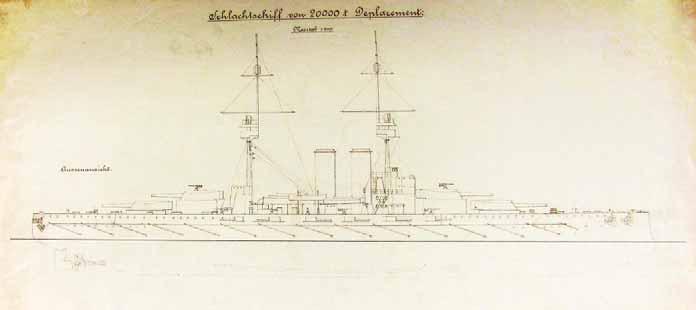the austro-hungarian naval industry
Over the long period between 1850 and 1904 the Habsburg Empire gradually developed a capable naval industry which was able to build ships and machinery and to manufacture armor plates and naval ordnance of any caliber. The last surface vessels of the Austro-Hungarian Navy built in a foreign country were the prototypes of the Huszár class destroyers and the Kaiman class torpedo boats built in 1904 in Britain. Between 1798 and 1848, every Austrian warship was built in the Arsenal of Venice. After 1850, Trieste became the center of the Austrian naval shipbuilding. The first Trieste built warships were constructed in the Navale Adriatico San Marco shipyard. Wilhelm Strudhoff, the owner of the Stabilimento Tecnico Triestino (STT) machine factory founded the San Rocco shipyard in 1857. This yard later would become the main subcontractor of the Navy, but did not receive naval orders until 1869. The first Austrian built steam frigate was launched in 1856 and the first and only ship of the line in 1858. Their steam engines were imported from Britain. From the 1860s, the Austrian industry could produce steam engines, but with the advent of the ironclads and the rifled guns the Navy was constrained to import again. In Austria only the Zeltweg Ironworks could produce armor plates but its capacity was far behind the needs of the Navy. The Austrian industry could produce only smaller rifled guns so the Navy relied on import in the field of large and medium caliber guns until the end of the century. In 1868, Tegetthoff modernized the fleet’s armament with Armstrong guns imported from Britain but in a short time the German Krupp became the main gun supplier of the Austro-Hungarian Navy. The STT San Rocco shipyard received its first naval order in 1869 for the casemate ship Custoza, the first iron hulled ship of the Navy. The Custoza was built with British armor and carried Krupp guns. Due to the concurrency of the STT and the economic crisis of 1873, the San Marco shipyard closed in 1875. From 1875 to the first decade of the 20th century there were two shipyards in the Mon-
archy which could build warships: the Navy’s own shipyard in the Arsenal of Pola and the privately owned STT. The shipbuilding, maintenance and modernization and the provision of naval ordnance (chapters VI and VII of the Navy’s budget) consisted 63-64 percent of the naval budget between 1870 and 1900, and 73 percent between 1900 and 1914.35 In the 1870s and 1880s 26 percent of this sum went to foreign firms.36 Until the 1890s, the Austrian industry was incapable to produce many strategic items needed for the Navy: armor plates and large and medium caliber guns were the most important of them. The 1890s brought important changes in this field too. The changing political climate in Austria and the lobby of the representatives of the rapidly growing Austrian heavy industry brought an important turn in the Navy’s policy. The Navy adopted a pro-domestic industry policy which meant that the Navy ordered every possible item from domestic (Austrian) firms even when the domestic prices were higher. This policy in turn helped the rapid development of the Austrian naval industry because more capital was invested in this industry in hope of lucrative future contracts. The first ship built with armor plates made by an Austrian firm was the Navy’s first armored cruiser the Kaiserin und Königin Maria Theresia. The Navy ordered her armor plates in 1891 from the Witkowitz Ironworks in Moravia founded by the Rothschilds. This firm had a virtual monopoly on the armor orders until the dissolution of the Austro-Hungarian Monarchy. The Škoda Works founded by Emil Ritter von Škoda in Pilsen made a cooperation agreement with the Krupp in 1890. The Škoda adopted the breech system of the Krupp. The coastal defense ships of the Monarch class were the first ships which carried medium and small caliber Škoda guns. The Škoda manufactured its first heavy gun (24 cm) in Pilsen in 1901. The first Austro-Hungarian capital ship which carried an all-Škoda armament was the third unit of the Habsburg class the Babenberg. In 1902 the Škoda denounced the cooperation agreement with the Krupp.
— 29 —






























